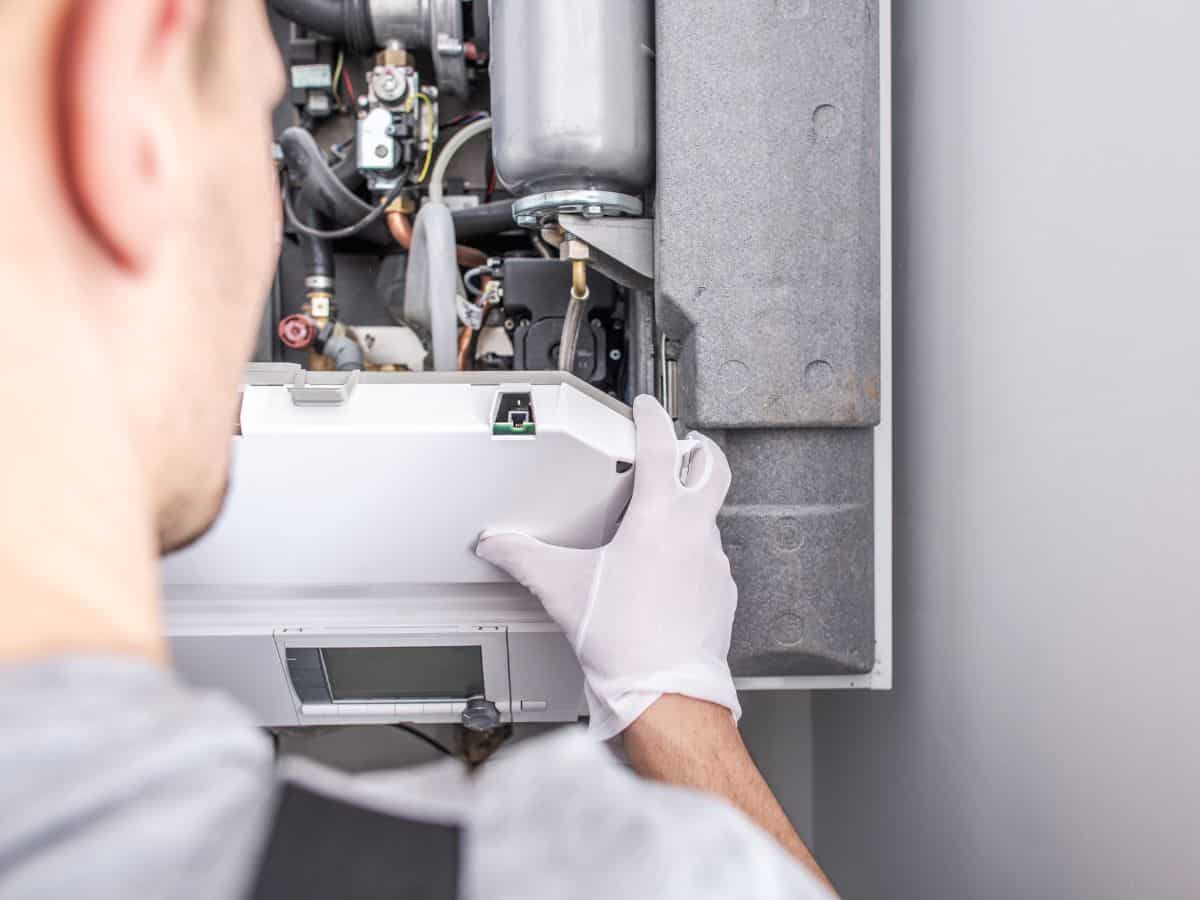Coming across a burning smell emanating from your furnace can be unsettling. Your home should be a place of comfort, not concern. Before hitting the panic button, it’s crucial to understand that not all furnace smells are precursors to severe problems.
However, discerning the cause is critical to ensuring your home remains safe. In this post, we’ll walk you through the steps you should take if you notice a burning smell from your furnace, emphasizing safety and the invaluable peace of mind from professional advice.
Remember, while some information can help you troubleshoot, there’s no substitute for the expertise of a seasoned HVAC professional like one of our team members at Hurliman Heating & Air!
Common causes of burning smell from furnace
To better understand the situation and potential solutions, let’s explore some common causes behind the burning smell emanating from your furnace.
Dust accumulation
- Seasonal start-up: A common cause of a burning odor is the accumulation of dust and debris in your furnace over the inactive months. When the furnace is turned on after an extended period, the dust burns off, producing a smell. This odor should dissipate within a few hours and not typically signify a severe problem.
Clogged filters
- Restricted airflow: Dirty or clogged filters can restrict airflow, causing the furnace to work harder and generate additional internal heat. This additional strain may lead to overheating and produce a burning smell. Regularly replacing or cleaning the filters can prevent this issue and improve your furnace’s efficiency.
Electrical issues
- Wiring concerns: Any burning smell persisting beyond the initial start-up phase could indicate electrical problems. Overheating wires or malfunctioning components within the furnace can produce a distinct burning odor, signaling a potential fire hazard. Immediate attention from a professional is crucial to address these concerns safely.
Mechanical failures
- Worn-out parts: The furnace consists of numerous mechanical parts, such as belts and bearings, that can wear out over time. When these parts malfunction, they may emit a burning smell due to friction or overheating. Proactive maintenance and timely replacement of these parts are vital to ensure your furnace’s longevity and safe operation.
Diagnosing the problem
You must approach the situation cautiously when you detect a burning smell from your furnace. Here are practical DIY troubleshooting steps, followed by guidance on when to call in professional help:
Quick DIY checks:
- Inspect filters: Check if your furnace’s air filters are dirty or clogged. A quick replacement or cleaning of the filters might resolve the issue.
- Clear vents and registers: Ensure all vents and registers around your home are open and unblocked to promote proper airflow.
- Visual inspection: Safely inspect your furnace for any signs of wear and tear or damage that might be causing the burning smell.
Safety first:
- Turn off the furnace: If the smell persists or you notice any unusual sounds or behaviors, turn off the furnace immediately to prevent further damage.
- Avoid electrical DIYs: Do not attempt to fix any electrical components yourself. Electrical issues should only be handled by professionals.
Remember — while some issues can be easily fixed, your safety and that of your home are paramount. Don’t hesitate to seek the assistance of a qualified HVAC technician to ensure your furnace is operating safely and efficiently.
Addressing belt wear and tear in blower motors
One less obvious but critical issue that might be causing a burning smell from your furnace is wear and tear on the belts within blower motors. These belts can degrade over time, affecting the performance and safety of your furnace. Recognizing the symptoms and understanding the steps to replace them is key.
Symptoms of belt problems
- Unusual noises: Squealing or screeching noises from the furnace can indicate a worn or loose belt.
- Reduced airflow: Noticeably weaker airflow from your vents could indicate that the belt is not operating efficiently.
- Visible wear and tear: Safely inspect your furnace for any signs of wear and tear that might be causing the burning smell.
Steps for replacing furnace belts
- Turn off power: Ensure the furnace and its power source are completely off before beginning work.
- Access the belt: Follow the manufacturer’s instructions to open the furnace cover and locate the blower motor and belt.
- Inspect the belt: Confirm the belt’s condition and determine if a replacement is necessary.
- Refer to the manual: Check your furnace’s manual for the right belt type and replacement procedures specific to your model.
- Loosen the motor mount: Carefully loosen the motor mount to remove the old belt. Remember where each piece was for reassembly.
- Install new belt: Place the new belt onto the motor pulley and blower pulley. Ensure it’s snug but not overly tight.
- Adjust for tension: Follow your furnace’s guidelines for proper belt tension. If the belt is too loose or too tight, it can lead to malfunctions.
- Reassemble and test: Reassemble any parts disassembled during the process. Turn the power back on and briefly run the furnace to ensure everything works properly.
Regular monitoring and maintenance of the belts within your furnace’s blower motor are crucial for efficient operation and safety. If at any point you need clarification or are uncomfortable with these steps, it’s essential to call a professional HVAC technician to take over.
Preventative maintenance tips for your furnace
Preventative maintenance is key to ensuring the longevity, efficiency, and safety of your furnace. Regular inspections can help you identify potential issues before they become significant issues, saving you money on repairs and energy costs in the long run.
Additionally, they ensure your furnace operates safely, reducing the likelihood of carbon monoxide leaks and fire hazards. It’s recommended to schedule a professional furnace inspection and maintenance at least once a year, preferably before the heating season begins. This proactive approach ensures your furnace is in optimal condition when needed, providing peace of mind and a comfortable home environment.
Need furnace maintenance? Contact Hurliman!
While many furnace issues can be resolved through careful troubleshooting and proactive maintenance, there are circumstances where professional intervention becomes imperative. If you encounter persistent problems, such as recurrent burning smells or unusual noises after attempting DIY fixes, or you are still determining the nature of the problem, contacting a licensed HVAC technician is the best course of action.
Professionals can provide a comprehensive inspection, accurately diagnose issues, and perform repairs or maintenance to ensure your furnace operates safely and efficiently. It’s essential to prioritize your safety and that of your household by seeking expert assistance when in doubt.
For reliable and expert furnace maintenance and repair services, contact our team at Hurliman Heating & Air. We’re committed to ensuring your home remains warm and safe throughout the colder months.





